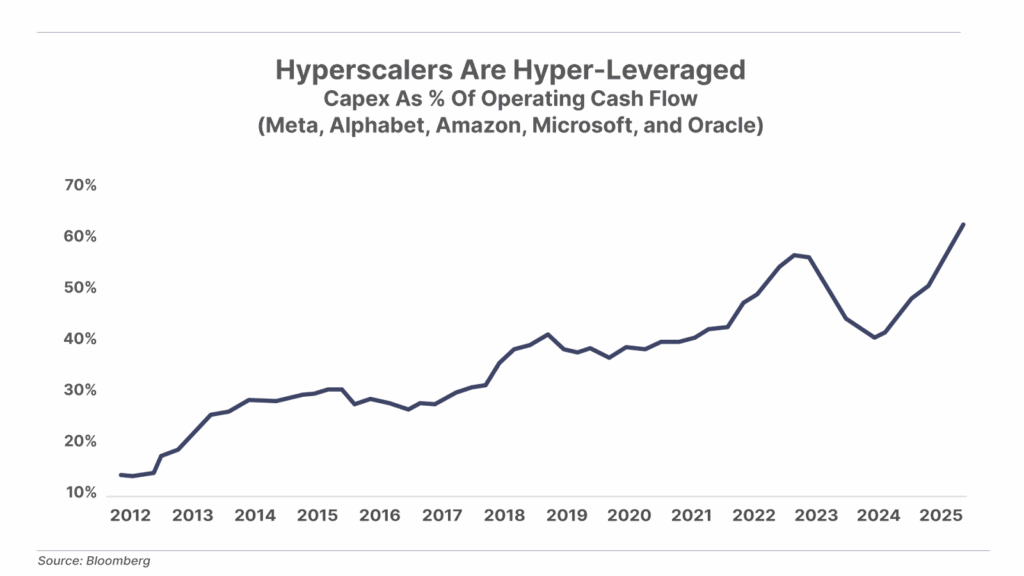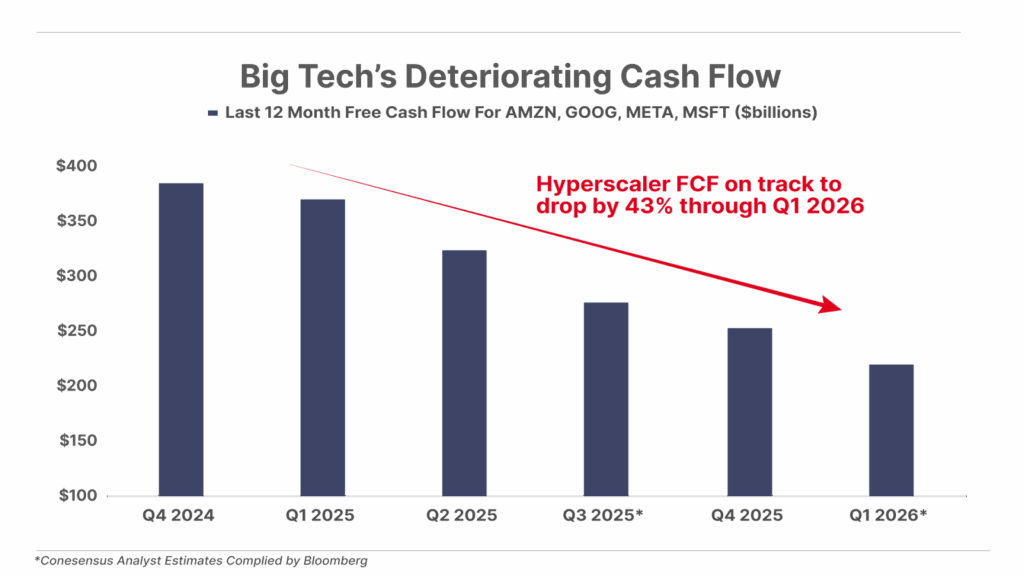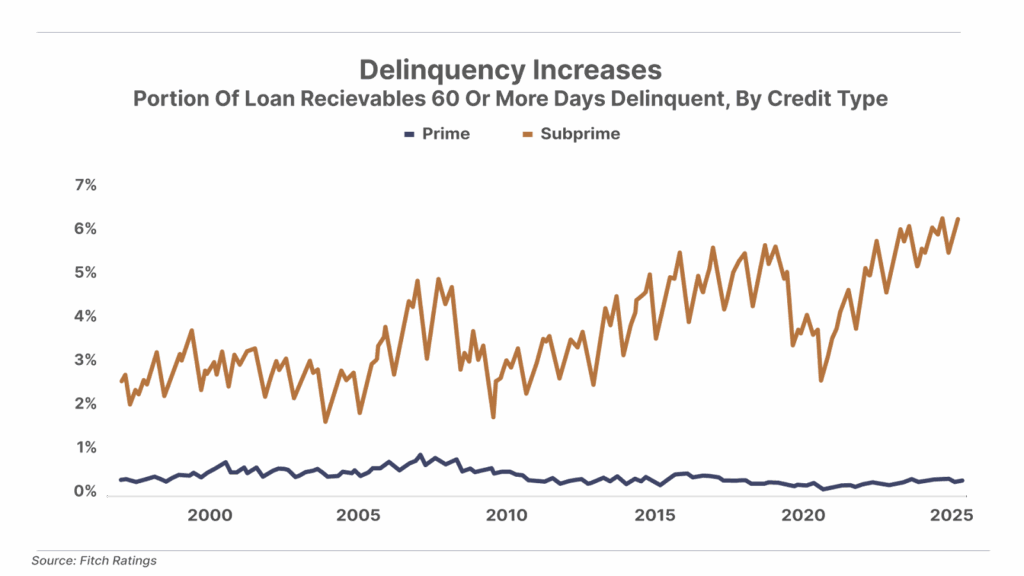Issue #124, Volume #2


The Next Great Medical Technology Has Arrived And Trillions Are At Stake
This is Porter’s Daily Journal, a free e-letter from Porter & Co. that provides unfiltered insights on markets, the economy, and life to help readers become better investors. It includes weekday editions and two weekend editions… and is free to all subscribers.
| $11 billion on one platform… Changing your investing life forever… siRNA significance… It all started with a Nobel Prize… Erez Kalir’s Tech Frontiers… Carvana’s subprime problem… Hyperscalers are hyper-leveraged… |
Yesterday one of the world’s leading biotech companies spent $11 billion to buy a single “bridge.”
It’s called AOC – but it’s not a bartender turned socialist rabble-rouser.
And it’s not some new form of artificial intelligence (“AI”).
AOC – antibody-oligonucleotide conjugates – is the key technological bridge that will expand RNA interference treatments beyond the liver.
You probably haven’t heard about any of this stuff. But you will. Novartis (NVS) thinks AOC is worth $11 billion. And, in time, we expect this “bridge” will be worth hundreds of billions.
Or even trillions.
If you will take the time today to read, to fully consider, and to act on the information below, I have no doubt it will change your investing life, forever.
In today’s Daily Journal, I am going to tell you everything you need to know to make millions of dollars as investors over the next decade.
That isn’t an exaggeration. And it’s not hypothetical. In fact, we are already doing this for people who trusted us enough to buy and read Erez Kalir’s Tech Frontiers.
Subscribers have already seen a set of recommendations that’s earned well more than 50% annual returns since inception. That’s not just one recommendation: that’s the total annualized return of all of our Tech Frontiers recommendations.
There’s absolutely no reason you can’t be part of that.
As yesterday’s big Novartis purchase demonstrates, this new foundational technology – siRNA, which I’ll describe in more detail below – is only now making its way into Big Pharma’s pipelines.
There is still plenty of time to get in before any of the big money is made.
This Will Be The Biggest Story Of Our Careers
Out of everything we’ve written about, nothing is more important than siRNA.
And so, I thought it was important to put all of this down in a Journal. I have always believed my real job is to give you the information I’d most want if our roles were reversed. I also know what I’m really selling is trust.
I hope, by giving you this thorough explanation – telling you everything I’d want to know – I can convince you to trust me enough to buy Tech Frontiers, edited by Erez Kalir.
But I am not trying to convince you because we need another subscriber. Fortunately, Porter & Co. has thousands of Partners, who sponsor our work completely. We could go on, quite happily, if we never added another subscriber in our lives.
No, I hope I can persuade you to read our work about siRNA and other enormously important new technological platforms because this information will truly change your life.
You’ll not only have the kind of information that no one else does – information that will make you a huge amount of money as an investor – but you’ll also have a much better idea of what kinds of healthcare are available should you ever require treatment.
In short, I don’t think there’s any information as valuable or as important as what we’re publishing in Tech Frontiers (originally called Biotech Frontiers).
But I can only lead the horse to water… I can’t make him drink it.
You may not like acronyms or having to learn the basics of cellular biology. You may think this is all over your head. I assure you, it’s not.
All you have to do is read our work. Follow our guidance. And, if you do, you will make an enormous fortune over the next 10 years.
Trillions of dollars will be earned by the companies pioneering new siRNA therapies over the next decade. As Erez explained in the April 2025 Biotech Frontiers, “A Biotech Tipping Point”:
“Over the next decade, I believe siRNA will prove to be the most transformative new modality for untreatable diseases since the advent of monoclonal antibodies.”
Understand The Platform – Understand The Opportunity
To understand what’s happening today with small, interfering RNA (“siRNA”), you must know the history of the first great biotechnology – monoclonal antibodies.
No discovery in the history of science had a larger medical and commercial impact than that of monoclonal antibodies.
Monoclonal antibodies (“mAbs”) are genetically engineered, fully human, protein therapies that act like precision-guided cruise missiles. They target a specific molecule in the body (usually on a cancer cell, virus, or immune cell) to help treat disease. They were biotechnology’s first great targeted therapeutic approach to treating disease.
Last year, five of the top-10 best-selling drugs in the world were mAbs.
These mAbs redefined the standard of care for more than 50 major diseases, many previously considered untreatable. Monoclonal antibodies lie at the very center of modern medicine’s treatments for cancer, cardiovascular disease, organ transplants, inflammatory and autoimmune diseases, allergies, infectious diseases, and ophthalmic disorders. Their financial and therapeutic impact can’t be overstated.
For example: lambrolizumab landed in Merck’s (MRK) drug pipeline via its $41 billion purchase of Schering-Plough in November 2009. At the time of the merger, Merck’s senior leadership didn’t appreciate how important mAbs were going to be, and they had a term sheet in place to sell lambrolizumab to outside investors. Only a last-minute intervention from the president of Merck Research Labs, Dr. Peter Kim, prevented the sale.
Thank God.
You might not have heard of lambrolizumab. And you probably wouldn’t recognize the name that Merck later gave it, pembrolizumab. But I bet you have heard of the drug’s brand name – Keytruda. Today, Keytruda saves at least 10,000 women each year from breast cancer – in the U.S. alone. Keytruda is now the best-selling medicine in the world, with nearly $30 billion in annual revenue.
We (me and Erez) had the good fortune to have a front-row seat to the monoclonal antibody revolution. We saw it all coming.
In January 2000, I interviewed Celera Genomics founder, Craig Venter. Venter pioneered using ultra-high throughput, parallel arrayed computers to sequence the first human genome. Studying the genetic causes of diseases opened new pathways for targeted therapeutics, leading to thousands of new potential targets for mAbs. That’s when I knew how important this new class of medicine would become.
Erez knew about this technology and its incredible applications because his classmates from Stanford and Oxford were pioneering their development.
Over the last 25 years, we haven’t made an investment in medical technology without understanding the emerging mAbs in clinical trials. We knew they would change everything.
And today we see all of this happening again with siRNAs, this completely novel treatment approach.
Rather than destroying diseased cells via engineered antibodies, siRNAs “turn off” the parts of the genetic code inside cells that are pathologic, “silencing” the genes that lie at the heart of various genetic diseases.
Just as engineering mAbs was the technological foundation to an entirely new era of medicine, the pioneers of siRNA are enabling effective treatments for an array of genetic diseases where there’s been no effective treatment, to date.
The Nobel Prize-Winning Discovery
It all started with a Nobel Prize winning discovery in the early 2000s.
Dr. Craig Mello and Dr. Andrew Fire were studying how genes work in a tiny worm called C. elegans. They were trying to figure out how to turn off, or “silence,” specific genes so those genes would stop making the proteins they code for.
Scientists had seen this kind of gene silencing happen before in other organisms, but no one knew exactly how it worked. Dr. Fire and Dr. Mello discovered that injecting both “sense” RNA (which matches the gene’s normal message) and “antisense” RNA (its opposite strand) into the worm caused strong silencing. They proved this was because the two strands paired up to form double-stranded RNA (“dsRNA”). This dsRNA gets chopped into small pieces – the siRNAs, which then guide the cell’s machinery to find and destroy matching mRNA from the target gene, effectively turning it off.
They proved this hypothesis with a landmark experiment in which they injected C. elegans with dsRNA specifically designed to match a gene responsible for muscle movement – the unc-22 gene – and observed a near-total loss of that gene’s function.
The discovery by the two Nobel Prize winners was enormously significant. Their experiments showed that gene silencing is:
- Sequence specific – targetable to specific genes in specific tissues
- Systemic – occurring throughout an organism
- Even heritable – a silenced gene can be passed on in silenced form to progeny
Last April, in Biotech Frontiers Erez laid out why we believe the coming decade will become known as the “Era of Genetic Medicine.”
And he explained why, out of all of the emerging genetic-focused technologies, the most important of these technologies are RNA interference approaches, like siRNA. At the time, Erez recommended the dominant RNA interference platform company, Alnylam (Nasdaq: ALNY). In the five months since we made that recommendation, Alnylam shares have risen more than 50%. (For an update on Alnylam’s outstanding progress this year, make sure to see their next earnings report after the market’s close this Thursday.)
Over the weekend, Big Pharma giant Novartis announced it would acquire Avidity Biosciences (RNA) for $12 billion – which is on Erez’s Tech Frontiers watchlist. Net of the company’s $1 billion in cash, Novartis is spending $11 billion to buy one RNA interference company and its AOC bridge. That’s a huge endorsement of our view that RNA interference will be the leading drug-development technology over the next decade.
At the root of most devastating genetic diseases are two fundamental biological errors: genetic-coding defects and protein misfolding. Genetic errors – like those that cause sickle-cell anemia, cystic fibrosis, and some kinds of cancer – corrupt the body’s instruction manual for building healthy proteins. And even when the DNA code is correct, these proteins can still go rogue if they fold improperly, a cascade likely at the heart of neurodegenerative illnesses such as Alzheimer’s, Parkinson’s, and ALS.
For decades, medicine could only fight the consequences of these errors, treating symptoms downstream rather than silencing the faulty instructions upstream. RNA interference has changed that. RNA interference pathways can precisely shut down the genetic “factories” manufacturing disease-causing proteins. And it can do so with unprecedented accuracy and no collateral damage.
This revolutionary technology addresses the deepest sources of pathology – faulty genes and misfolded proteins – before they wreak havoc on the body.
This is miraculous for treating genetic diseases, but getting these siRNA “mute buttons” to the right spot in the body has been tricky. So far, most approved RNAi drugs (like those from Alnylam) target the liver, leaving other parts of the body – like muscles, brain, lungs, or tumors – largely out of reach.
The liver is a massive filter in the body’s bloodstream. It processes about 1.5 liters of blood per minute, getting first dibs on anything injected systemically (into the veins). This means siRNA molecules circulating in the blood naturally end up there in high concentrations. In contrast, other tissues (extrahepatic, meaning “beyond the liver”) have less direct blood supply or protective barriers, so siRNA gets diluted or blocked before arriving.
Liver cells (hepatocytes) have a receptor called the asialoglycoprotein receptor (“ASGPR”), which acts like a dedicated loading dock for certain molecules. Scientists attach a sugar called GalNAc (N-acetylgalactosamine) to siRNA, turning it into a “GalNAc-siRNA conjugate.” GalNAc binds tightly to ASGPR, pulling the siRNA inside the cell efficiently. This technology is used in all six Food And Drug Administration (“FDA”)-approved siRNA drugs, which all hit liver-related targets like rare metabolic diseases or high cholesterol.
Without something similar for other tissues, siRNA just bounces off or gets ignored.
For extrahepatic (beyond the liver) success, you need ligands (like antibodies or lipids) that bind specific proteins on target cells – much like how mAbs target specific cells.
To date, no extrahepatic siRNA approaches have received FDA approval… but Avidity’s targeted antibody platform AOC is the closest to achieving this next breakthrough with RNA interference therapeutics.
Avidity uses AOC to target muscle receptors like TfR1, allowing it to target muscle cells and genetic diseases that cause muscle pathology. This is a first-of-its-kind technology that allows Avidity to deploy RNAi therapies wherever disease hides in muscle: skeletal muscle and the heart.
Now… if you want to follow all of the coming advances in RNA interference… you’ll have to read Erez’s work in Tech Frontiers. Hopefully I’ve shown you enough here to get your started there and for you to realize two things:
- We’ve been right about how big siRNA is going to become
- We have the research talent to make sure that your investments in the field pay off – big time
If you’ve ever seen me make a “big prediction” before – like I did with Peak Oil, like I did with the mortgage debacle, like I did with monoclonal antibodies, like I did with P&C insurance (in 2012)… you know… we are going to follow this trend with more rigor and with better results than any other team in the world. This is going to be a massive, decade-plus technological development that will yield incredible therapeutic results – miracles – and billions and billions of dollars in profits for investors.
Horse, meet water.
If you’re not already a subscriber to Tech Frontiers, go here to learn more, or you can call our Customer Care team at 888-610-8895 or internationally at +1 443-815-4447 for more information on becoming one.
White House Insider Buck Sexton:
“Trump’s Next Move Will Shock The World”
It could single-handedly reshape the global order… dramatically increase U.S. power… and trigger a massive American market boom the likes of which we haven’t seen in 75 years.
Click here to get the details now.

Three Things To Know Before We Go…
1. Big tech is becoming more capital-intensive. The major technology companies providing computing infrastructure for artificial intelligence (“AI”) – Meta, Google, Amazon, Microsoft, and Oracle – are now spending about 60% of their operating cash flow on capital expenditures. That’s nearly double the average level of the past decade, with much of the capital directed toward AI infrastructure like data centers. As these investments grow, big tech companies are pivoting away from their historically capital-light business models. See item #2 for the key risk in this capex boom.

2. Big tech’s cash flow problem. Four of the largest U.S. technology companies will report Q3 earnings this week, including hyperscalers Alphabet (GOOG), Amazon (AMZN), Meta (META), and Microsoft (MSFT). Analysts expect double-digit earnings growth across the board, with an average year-over-year (“YOY”) increase of 29%. But free cash flow (“FCF”) tells another story. Because of the surge in capital expenditures noted above, hyperscaler FCF is expected to drop by an average of 31% YOY. And this trend is expected to continue, with FCF among this cohort on track to drop by nearly 50% from a peak in Q4 2024 through Q1 2026. The growing risk is that the hyperscaler capex binge fails to generate sufficient returns, causing these companies to pull back on investment, and take the air out of today’s AI boom.

3. Big banks are embracing stablecoins. Following passage of the GENIUS Act this summer, Zelle – the consumer payment service owned by a consortium of the country’s largest banks including JPMorgan Chase and Wells Fargo – is now planning to use U.S. dollar stablecoins to enable cross-border international money transfers. The move is meant to make international payments – which are typically slow and costly processes that involve moving funds across a number of financial institutions – far more efficient. It’s also one more step in adding legitimacy to stablecoins.
And One More Thing… Watching Carvana’s Earnings
Online used car retailer Carvana (CVNA) will report Q3 earnings after the close of trading on Wednesday. Carvana is heavily exposed to the subprime auto market. Approximately 40% of its loan originations are made to subprime consumers, the majority of which are packaged into loans sold directly to banks like Ally Financial (ALLY) or into asset-backed securities and sold to investors. Carvana also retains a portion of these loans on its balance sheet.
With subprime auto-loans delinquencies (loans 60 days or more behind on payments) hovering at near record high levels of 6.4%, we expect investor demand for these loans will begin waning. This could spell bad news for Carvana, which generates a significant portion of its earnings from selling subprime auto loans to banks and investors. Thus, Carvana’s Q3 report on Wednesday should provide an indicator of the health of this key area of the lending market.
(Full disclosure: Porter is currently short shares of Carvana in his personal account.)

Tell me what you think of today’s Daily Journal or anything else that is on your mind: [email protected]
Mailbag
I know you’ve mentioned the predictable drop in Kinsale at every earnings in the past, but why? As you noted, they “killed” it this quarter and shares dropped…
BTW – yes, I’m drinking the “water” with Erez Kalir’s Tech Frontiers. I’m up 400% on Sagimet Bioscience (Nasdaq: SGMT). Sadly, only a hundred shares. But this and other recommendations have given me more confidence in his recommendations.
Thanks again for the great service.
James M.”
Porter’s response: I can only speculate as the reason behind the sharp declines at Kinsale Capital (NYSE: KNSL) on earnings days.
It is an incredible business: best operating margins in all of the property-and-casualty (P&C) insurance (combined ratio), among the highest returns on equity (“ROE”) in the history of the industry (25%), and sustained rapid growth for a decade.
When you start to model this out, small changes in the growth rate can have profound impacts on the current present value.
So, I think the stock runs up on the hope (or the opportunity) that the growth rate will surprise to the upside.
When that doesn’t happen, those speculators withdraw again.
For the folks who simply stay the course and add to their positions on these sell-off days, I expect to see total returns of close to 20% annualized (on average) over the next decade. Or maybe even longer.
Friday’s Daily Journal about Erez Kalir and Tech Frontiers was awesome. I just wanted to share that I elevated from a Big Secret On Wall Street member to a Partner Pass member sometime in the past solely so that I can also be plugged into Erez’s service, and neither BSOW or Biotech (now Tech) Frontiers have ever disappointed! And, of course, with Porter’s Permanent Portfolio and other products, I have everything I could ever need. Thank you for all that you and your team do!
Jeff H.”
I’ve written to you several times over the last year or so about investing, portfolio, etc.
But now, I just wanted to say how much I appreciate and admire your posts on X. You tell it like it is. Not many have the courage to speak out and share the truth, even if it’s harsh. You’re a one and only – the best!
Fred A.”
Good investing,
Porter Stansberry
Stevenson, Maryland


Please note: The investments in our “Porter & Co. Top Positions” should not be considered current recommendations. These positions are the best performers across our publications – and the securities listed may (or may not) be above the current buy-up-to price. To learn more, visit the current portfolio page of the relevant service, here. To gain access or to learn more about our current portfolios, call our Customer Care team at 888-610-8895 or internationally at +1 443-815-4447.